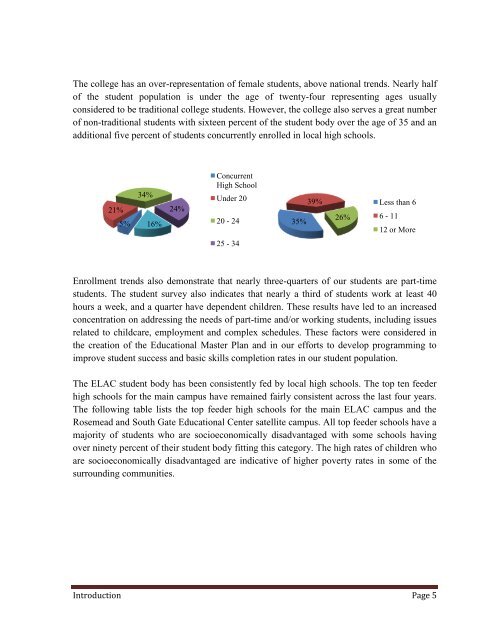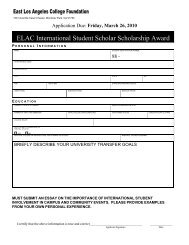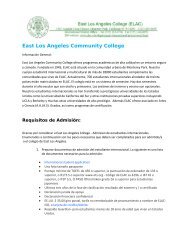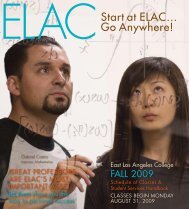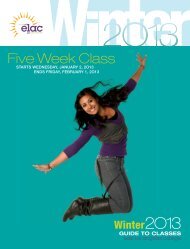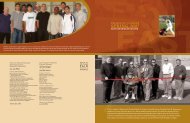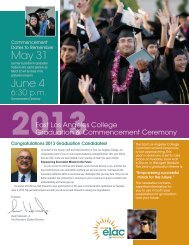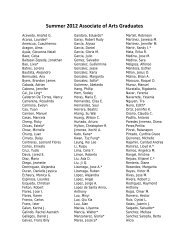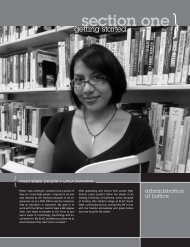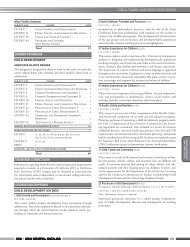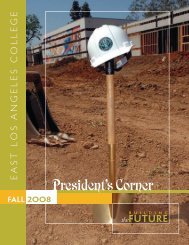Introduction - East Los Angeles College
Introduction - East Los Angeles College
Introduction - East Los Angeles College
Create successful ePaper yourself
Turn your PDF publications into a flip-book with our unique Google optimized e-Paper software.
The college has an over-representation of female students, above national trends. Nearly half<br />
of the student population is under the age of twenty-four representing ages usually<br />
considered to be traditional college students. However, the college also serves a great number<br />
of non-traditional students with sixteen percent of the student body over the age of 35 and an<br />
additional five percent of students concurrently enrolled in local high schools.<br />
21%<br />
5%<br />
34%<br />
16%<br />
24%<br />
Concurrent<br />
High School<br />
Under 20<br />
20 - 24<br />
35%<br />
39%<br />
26%<br />
Less than 6<br />
6 - 11<br />
12 or More<br />
25 - 34<br />
Enrollment trends also demonstrate that nearly three-quarters of our students are part-time<br />
students. The student survey also indicates that nearly a third of students work at least 40<br />
hours a week, and a quarter have dependent children. These results have led to an increased<br />
concentration on addressing the needs of part-time and/or working students, including issues<br />
related to childcare, employment and complex schedules. These factors were considered in<br />
the creation of the Educational Master Plan and in our efforts to develop programming to<br />
improve student success and basic skills completion rates in our student population.<br />
The ELAC student body has been consistently fed by local high schools. The top ten feeder<br />
high schools for the main campus have remained fairly consistent across the last four years.<br />
The following table lists the top feeder high schools for the main ELAC campus and the<br />
Rosemead and South Gate Educational Center satellite campus. All top feeder schools have a<br />
majority of students who are socioeconomically disadvantaged with some schools having<br />
over ninety percent of their student body fitting this category. The high rates of children who<br />
are socioeconomically disadvantaged are indicative of higher poverty rates in some of the<br />
surrounding communities.<br />
<strong>Introduction</strong> Page 5


